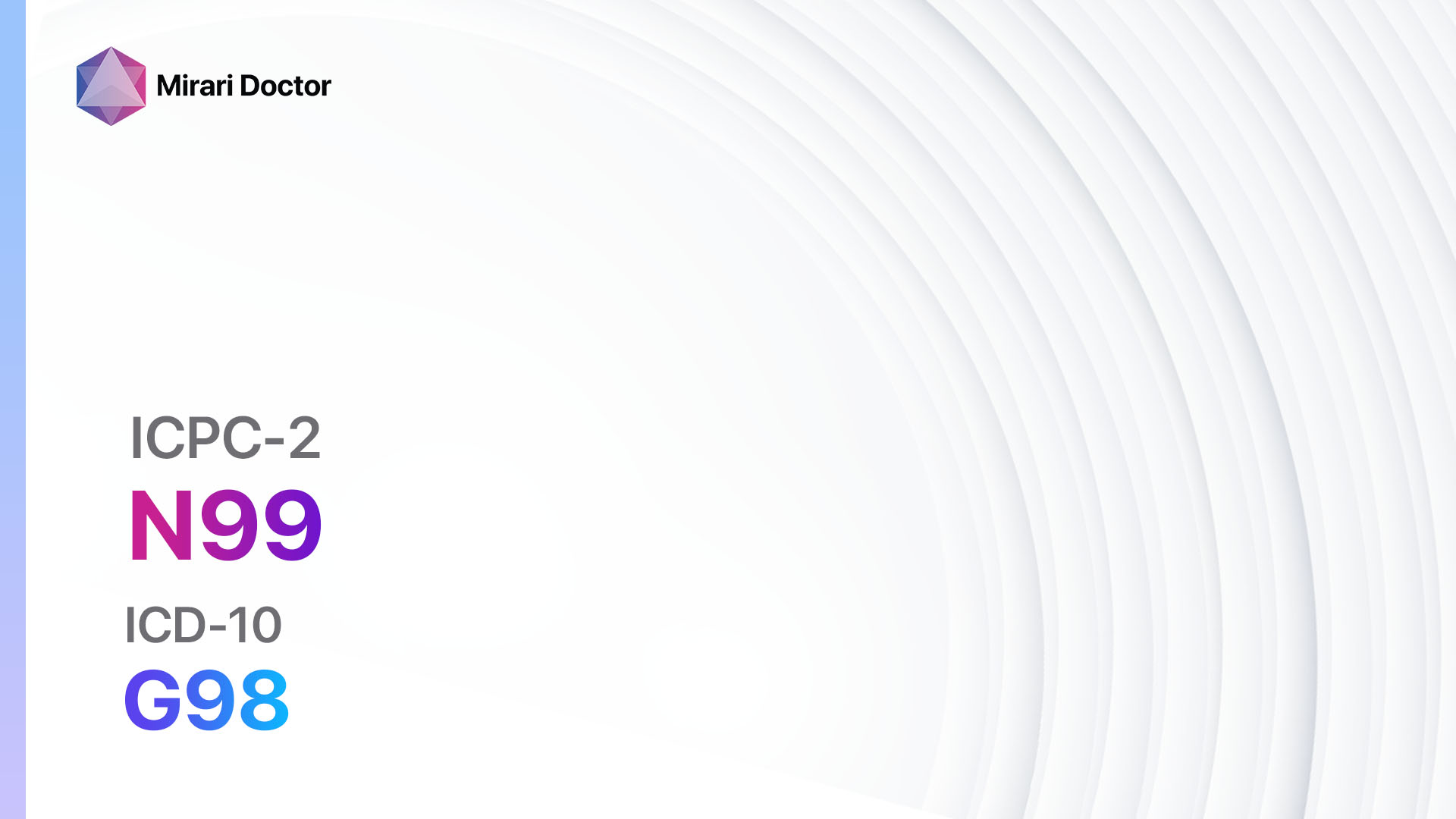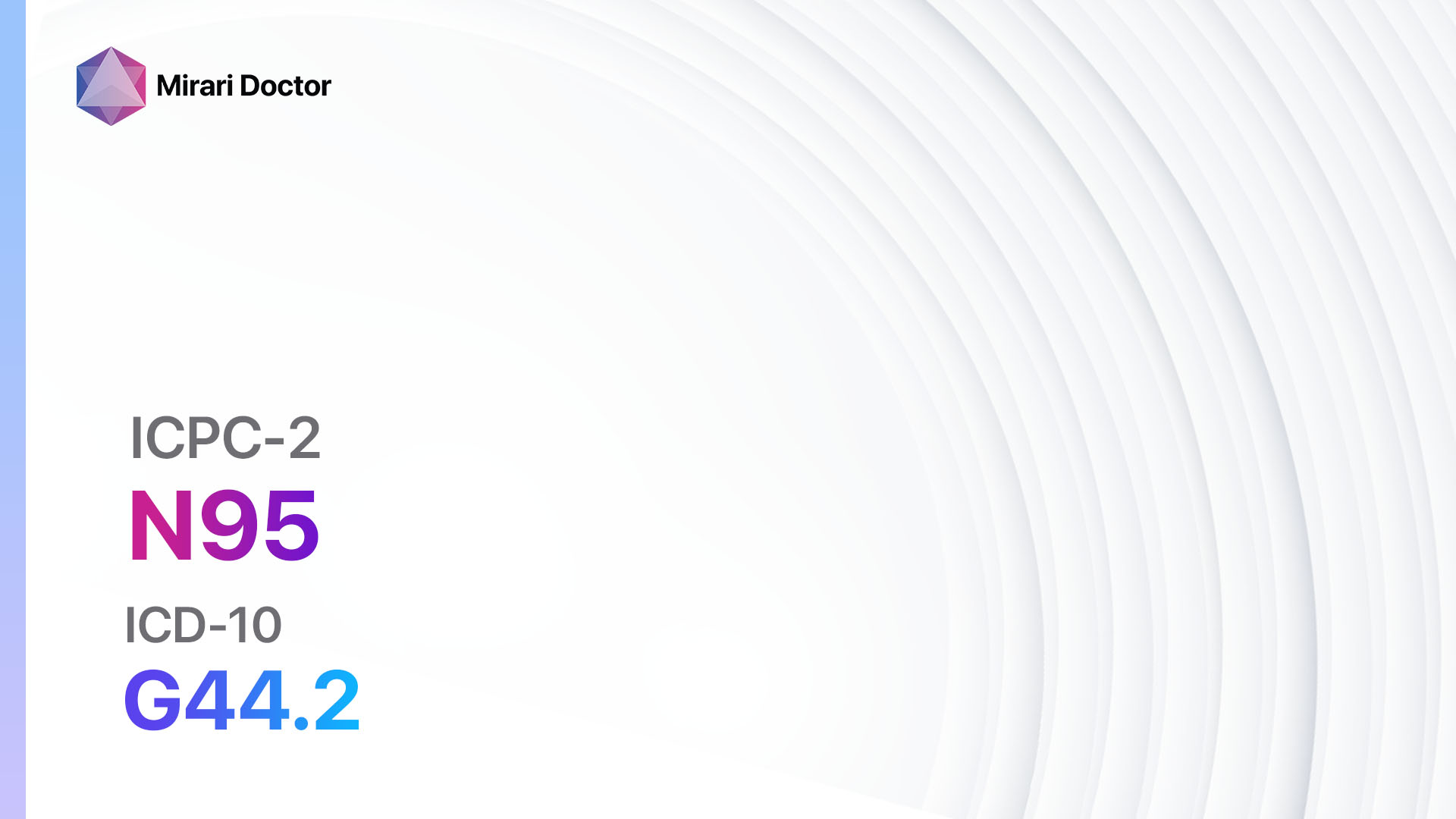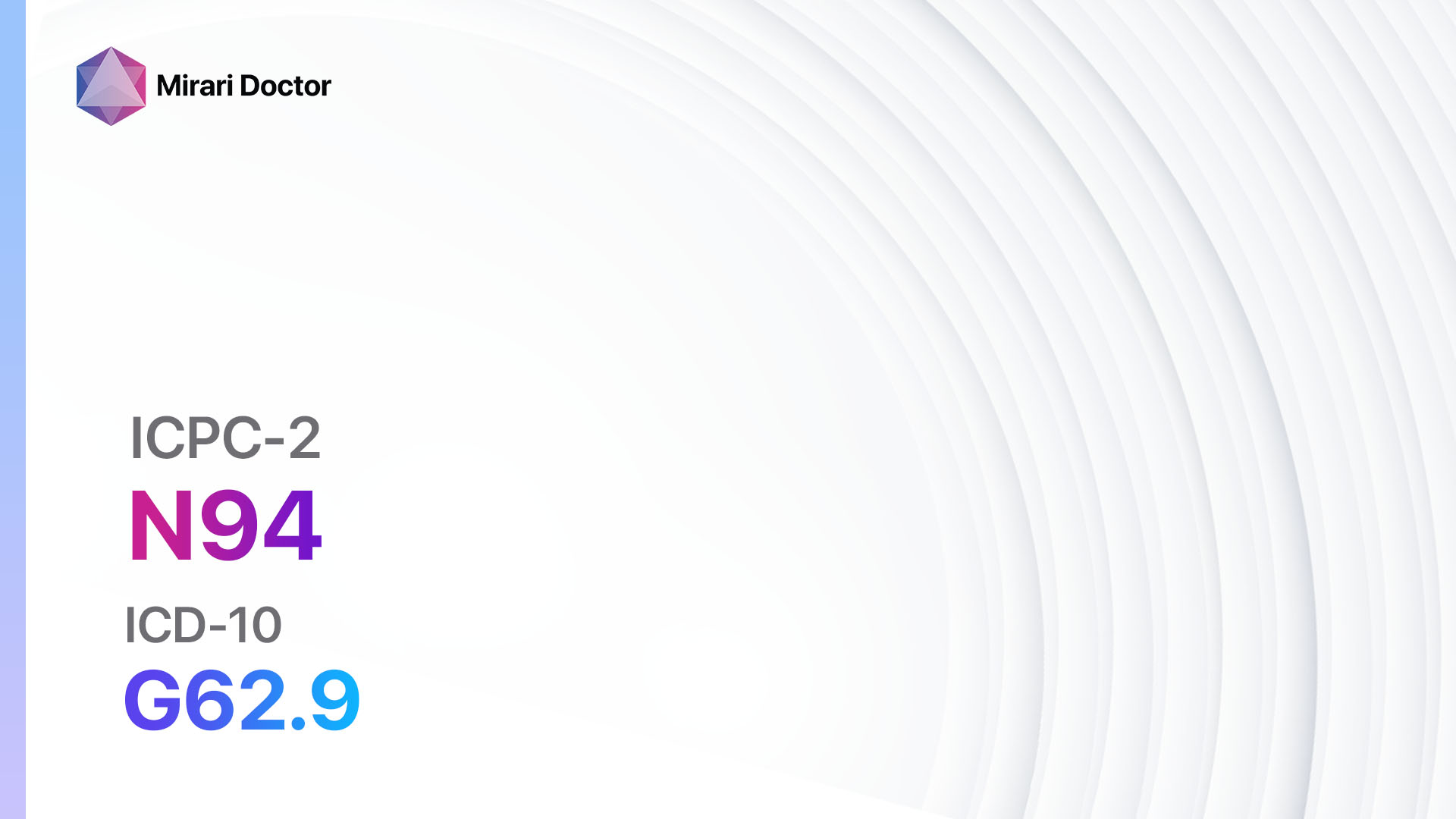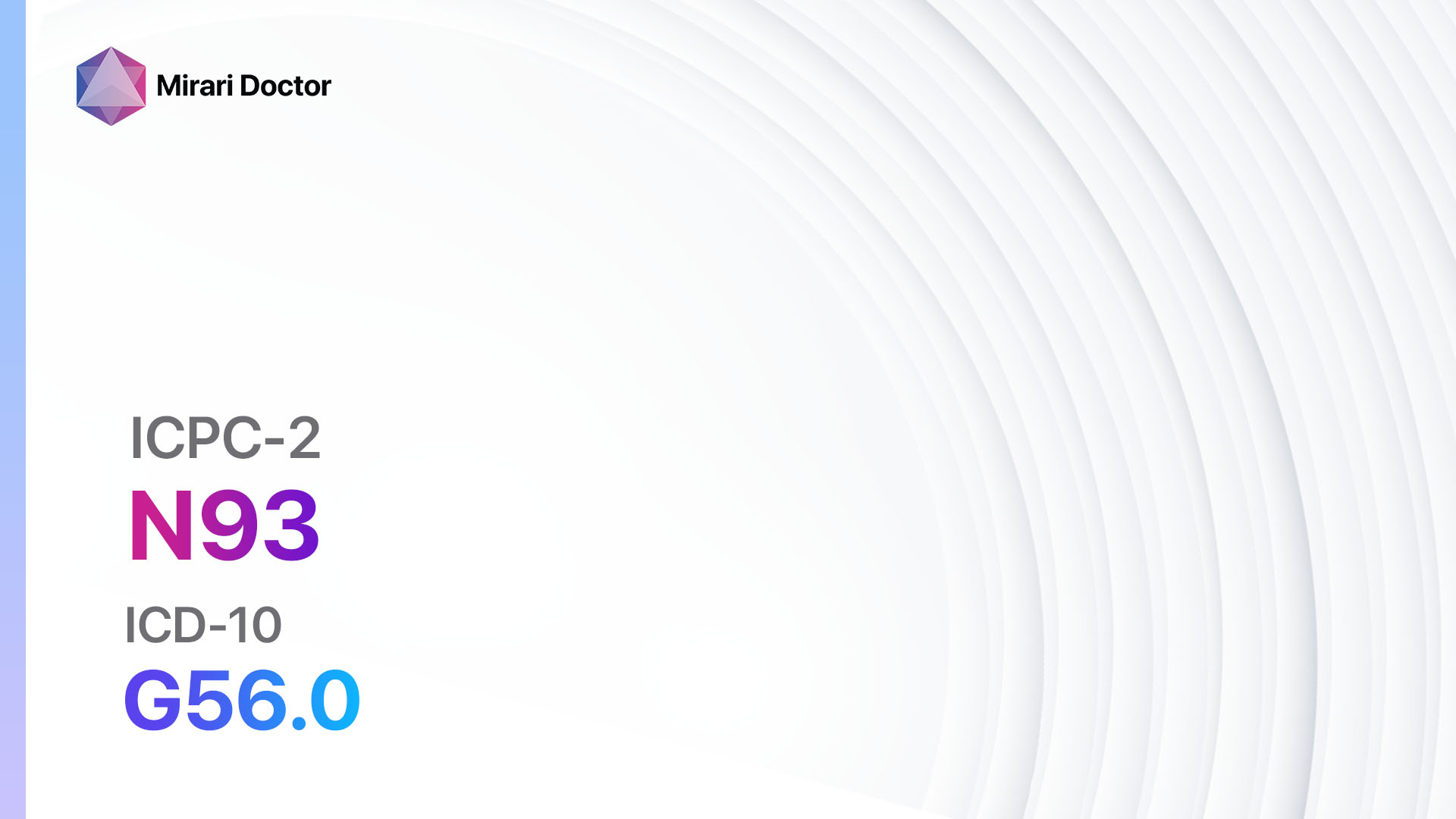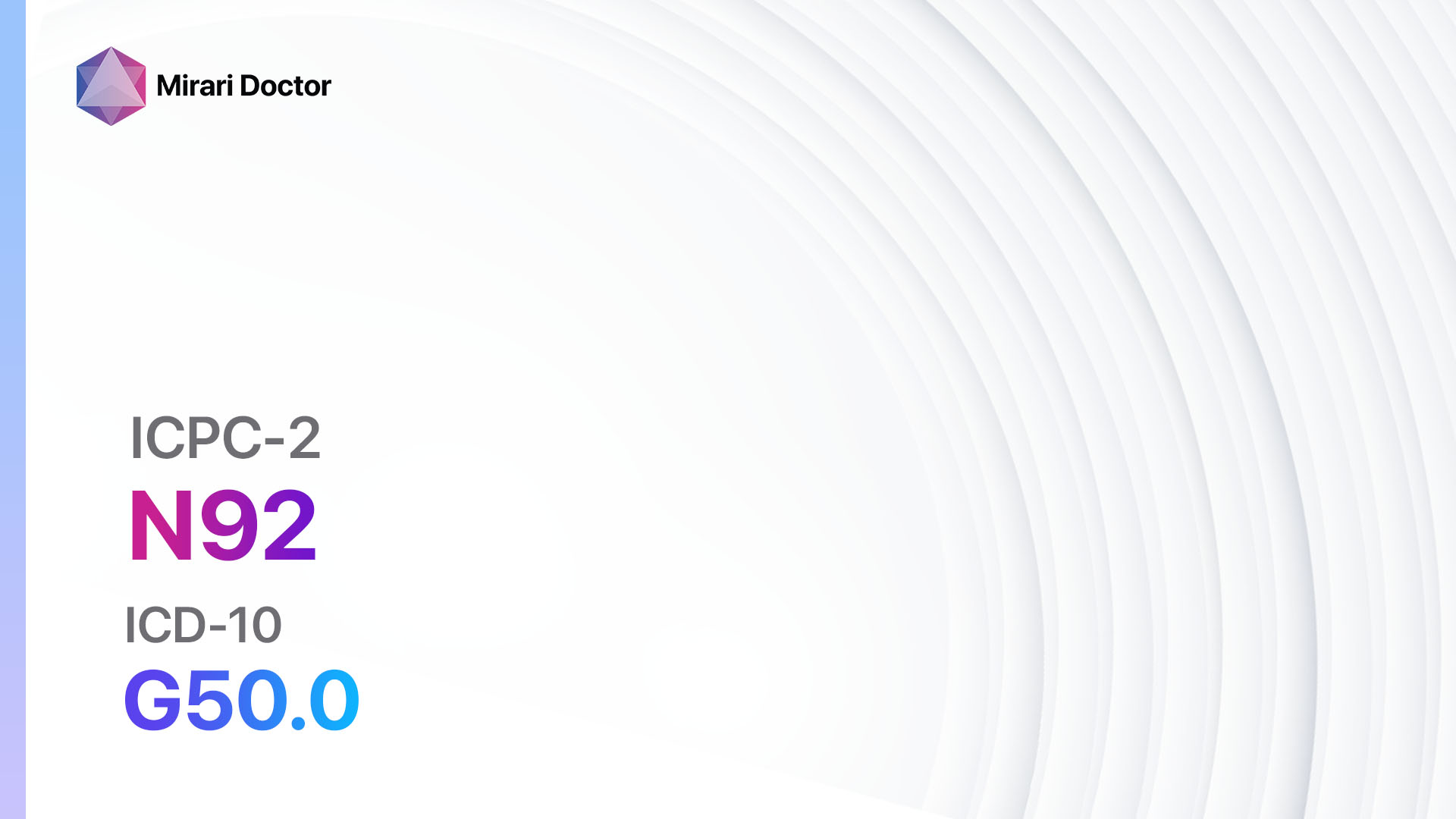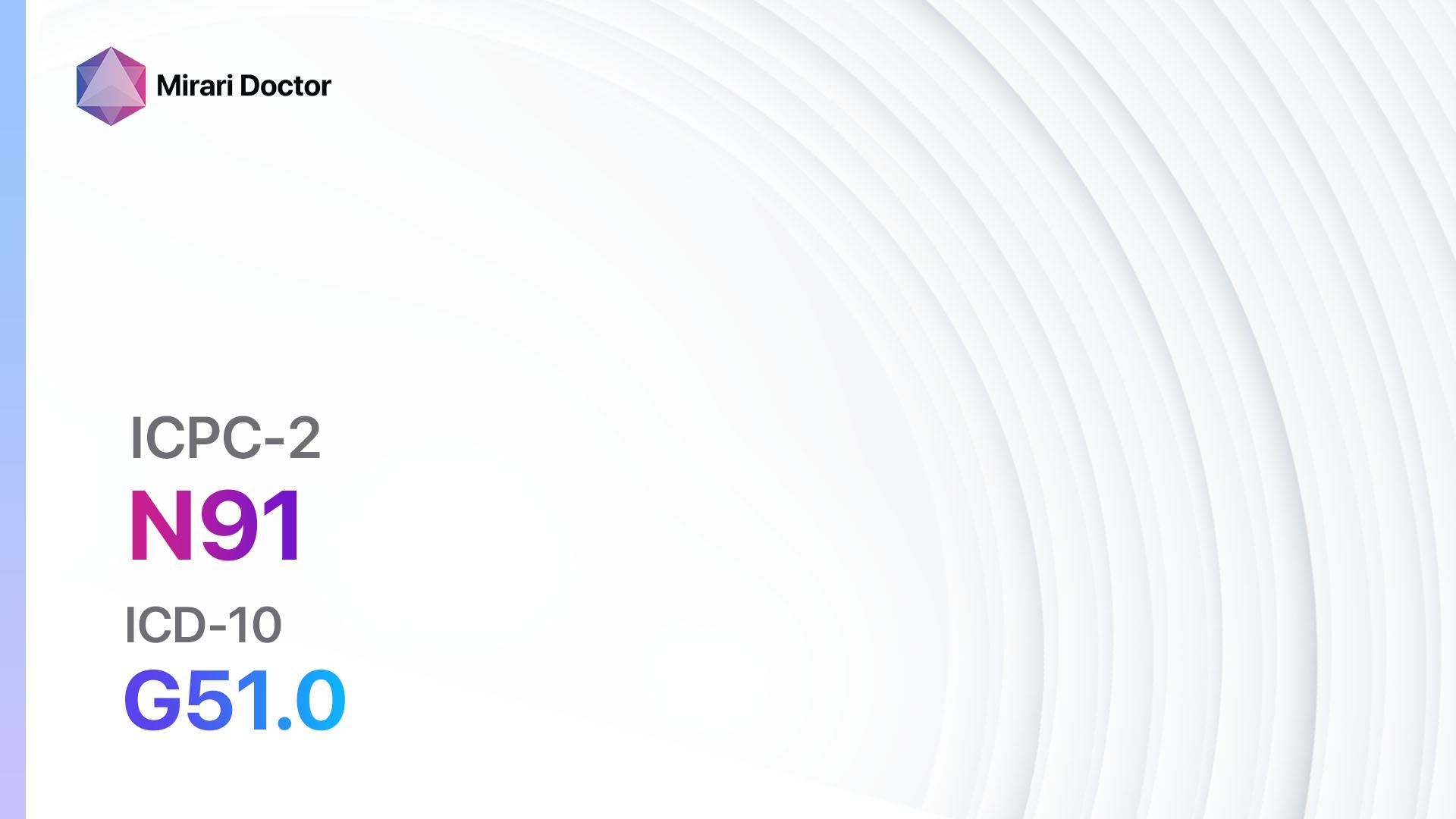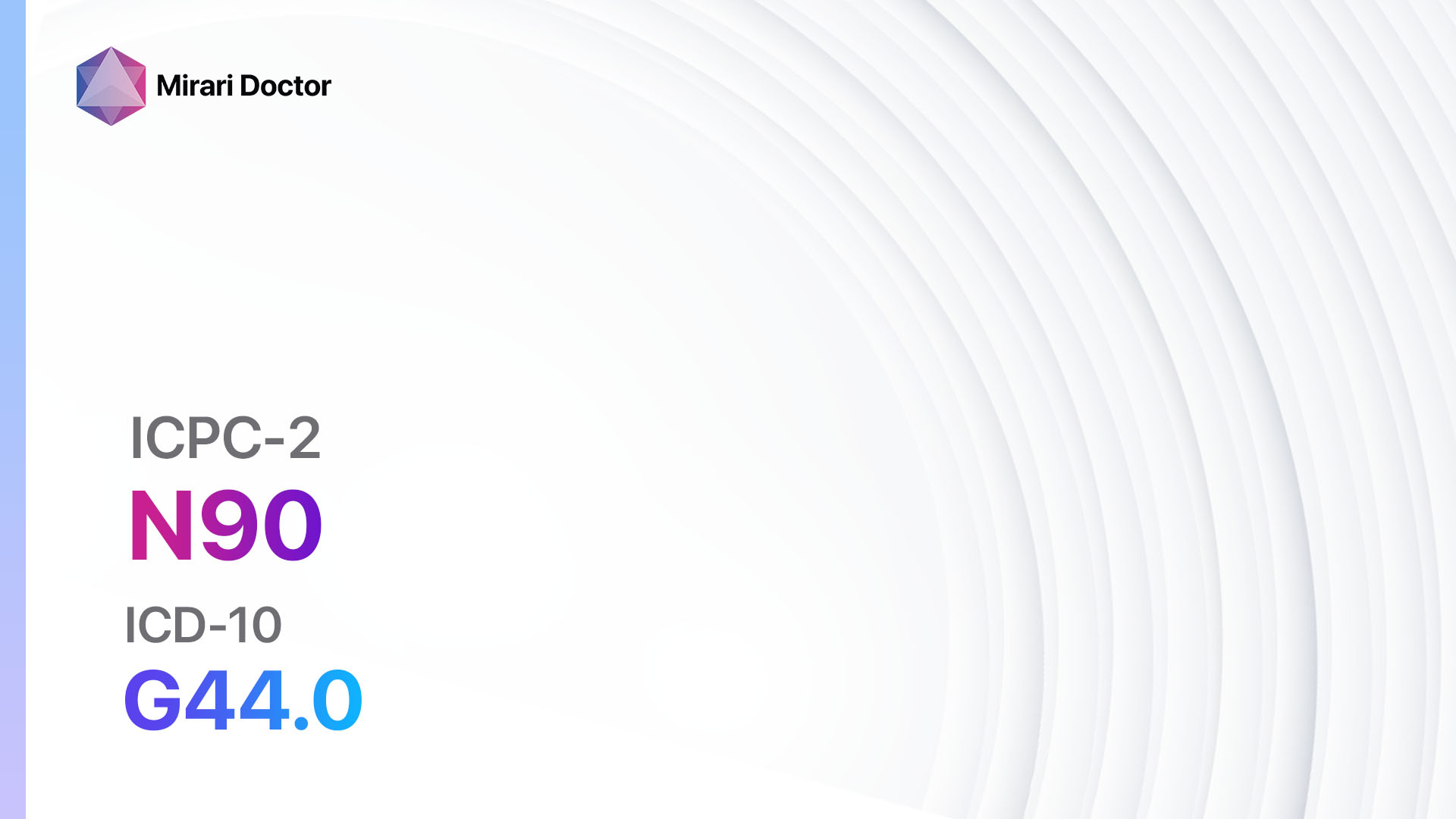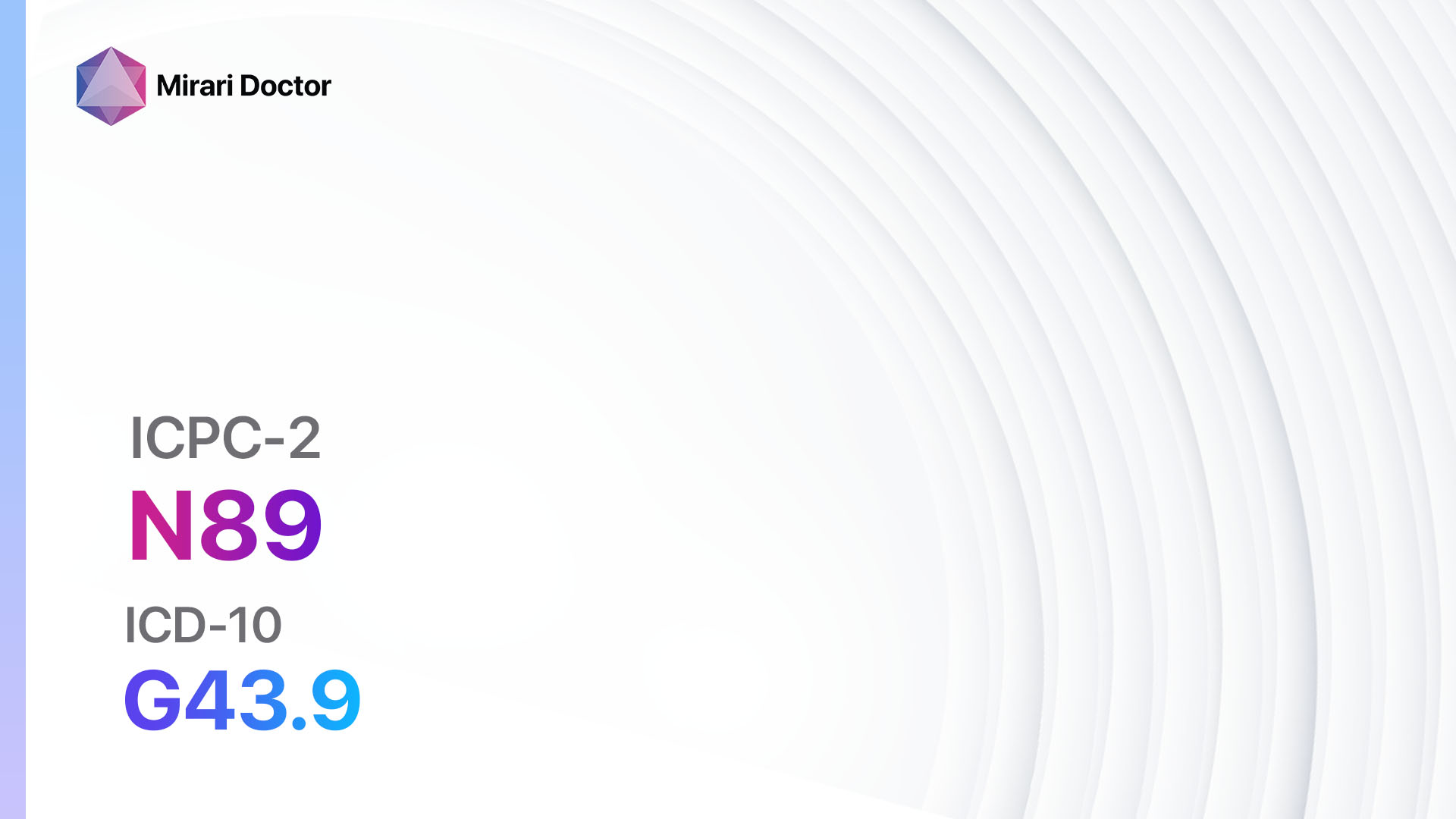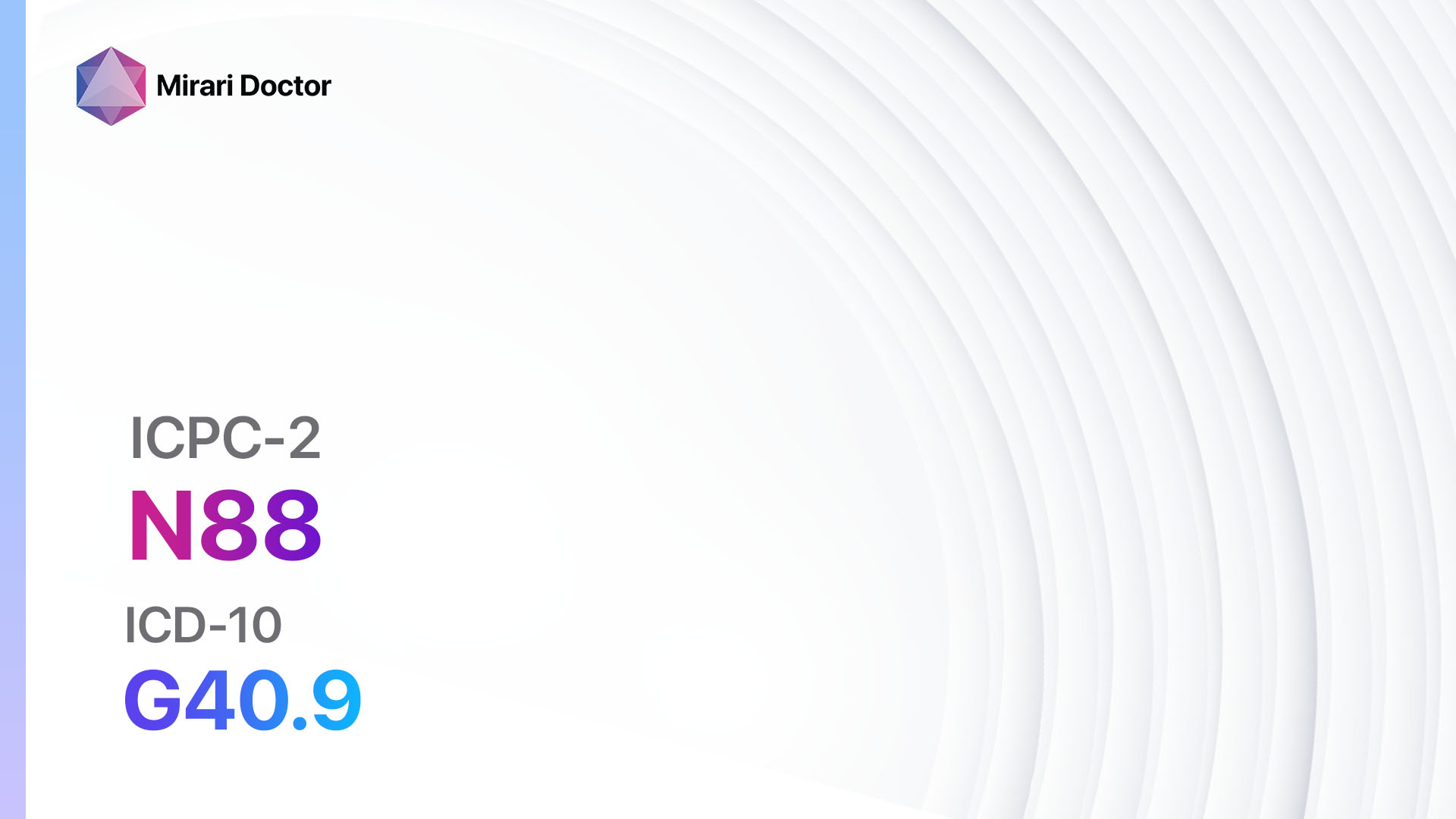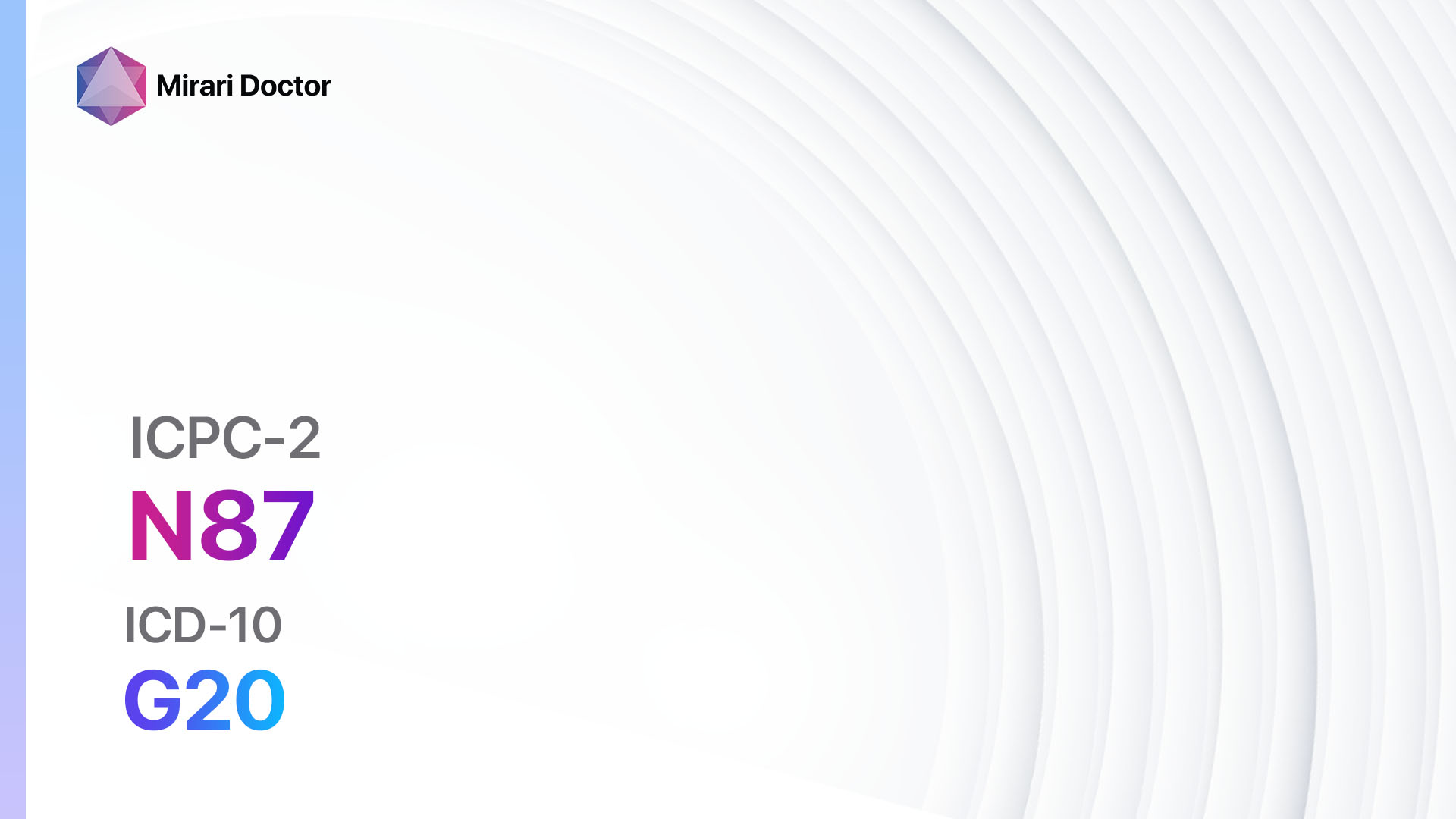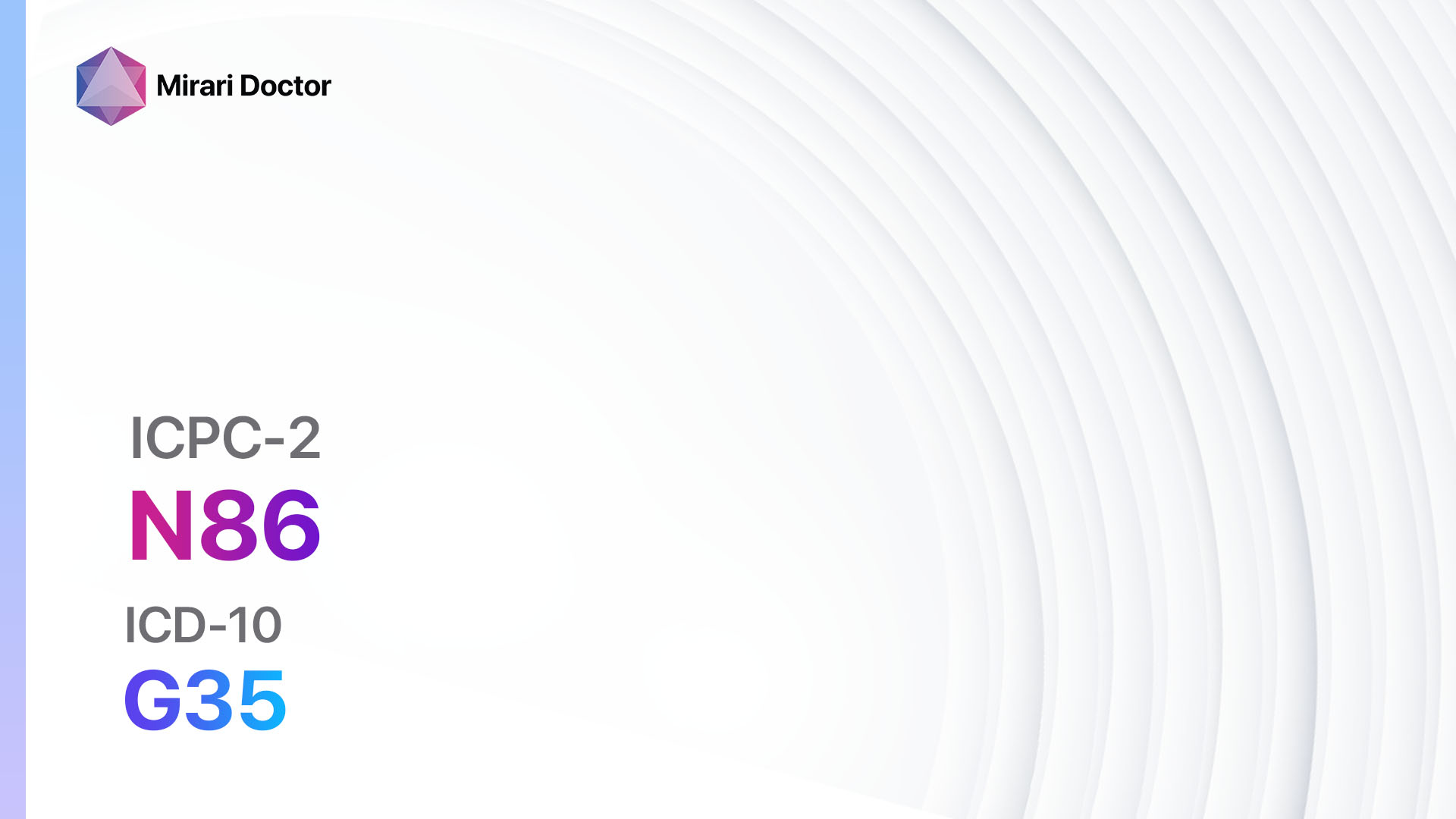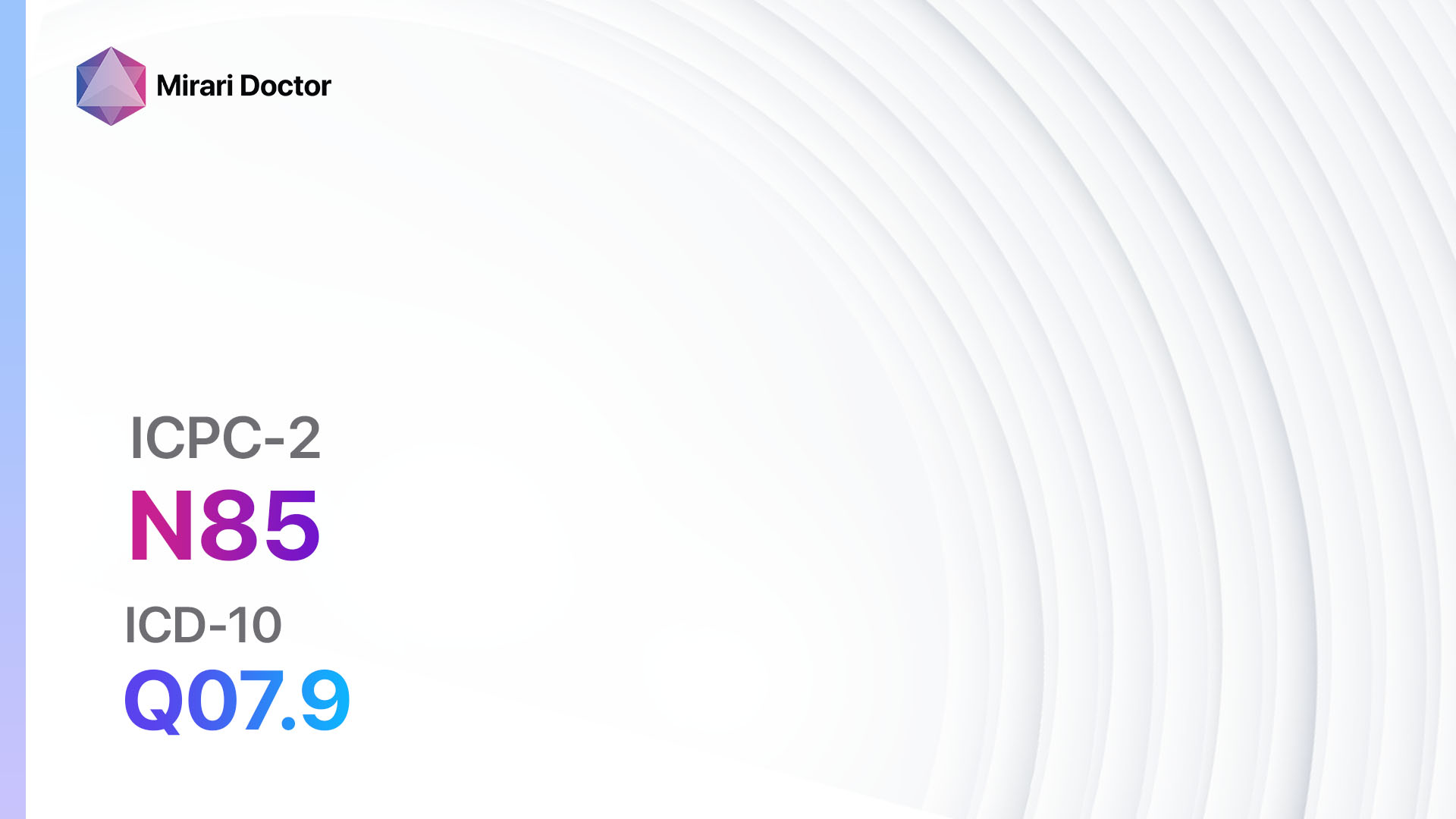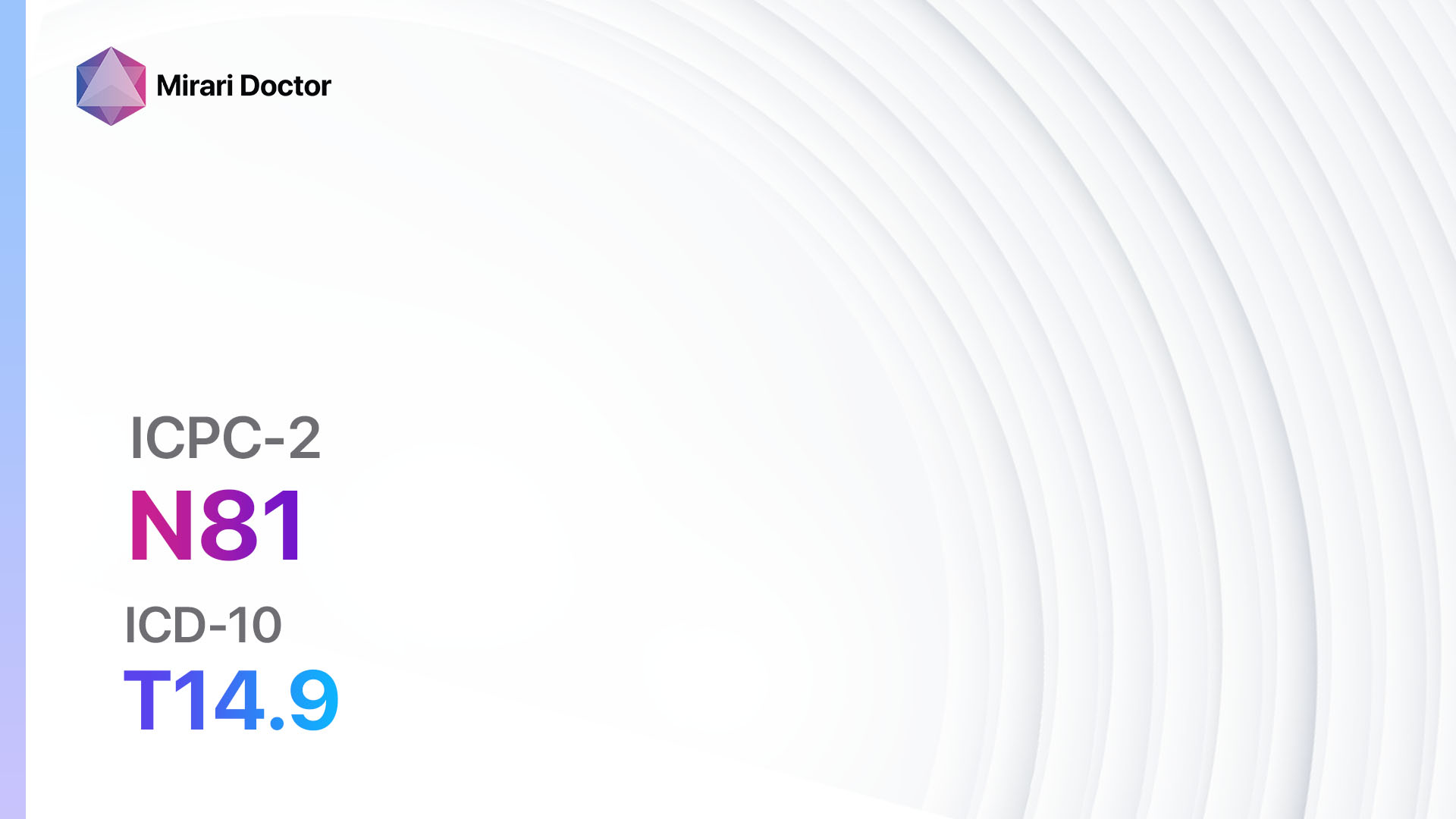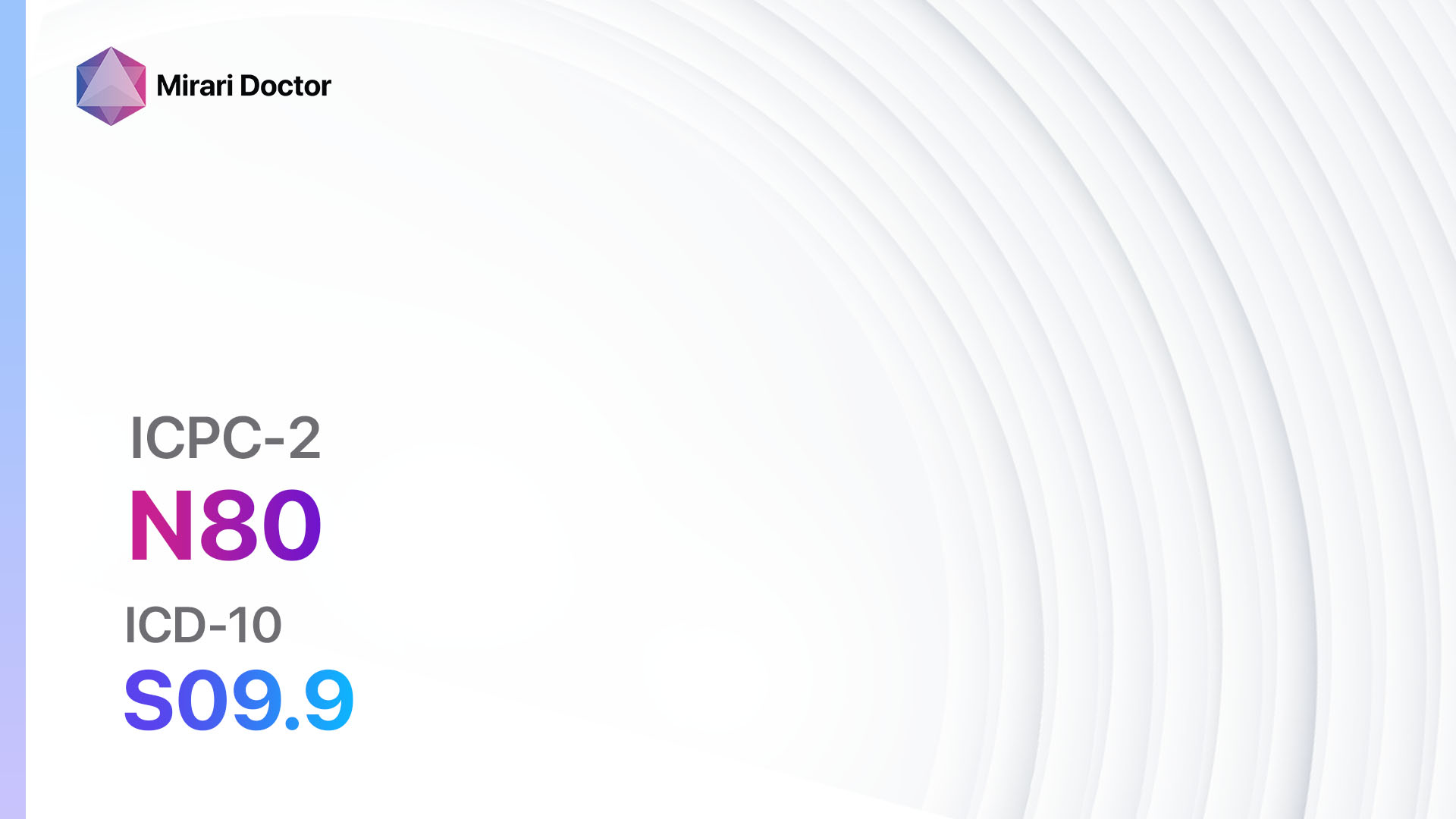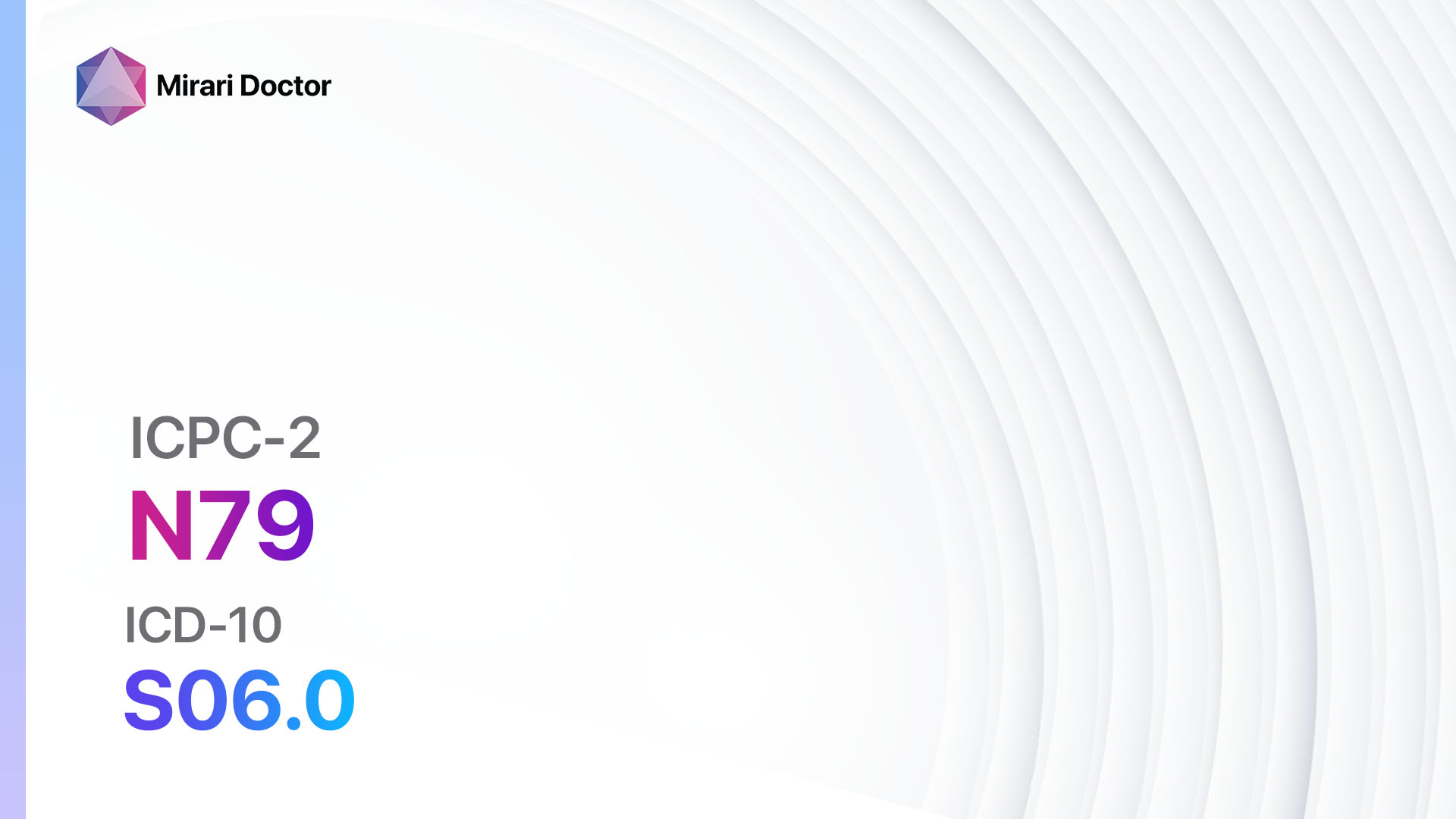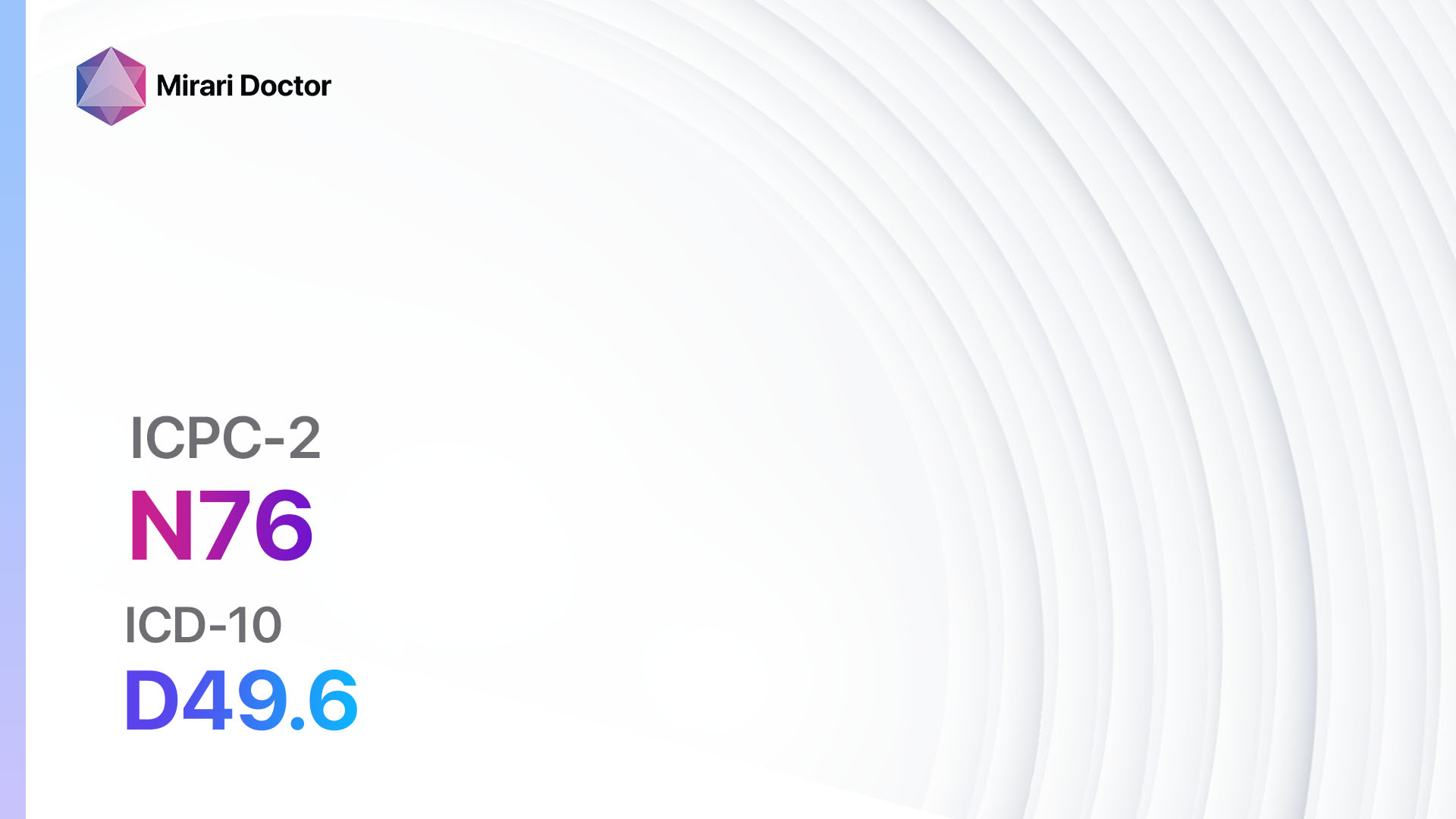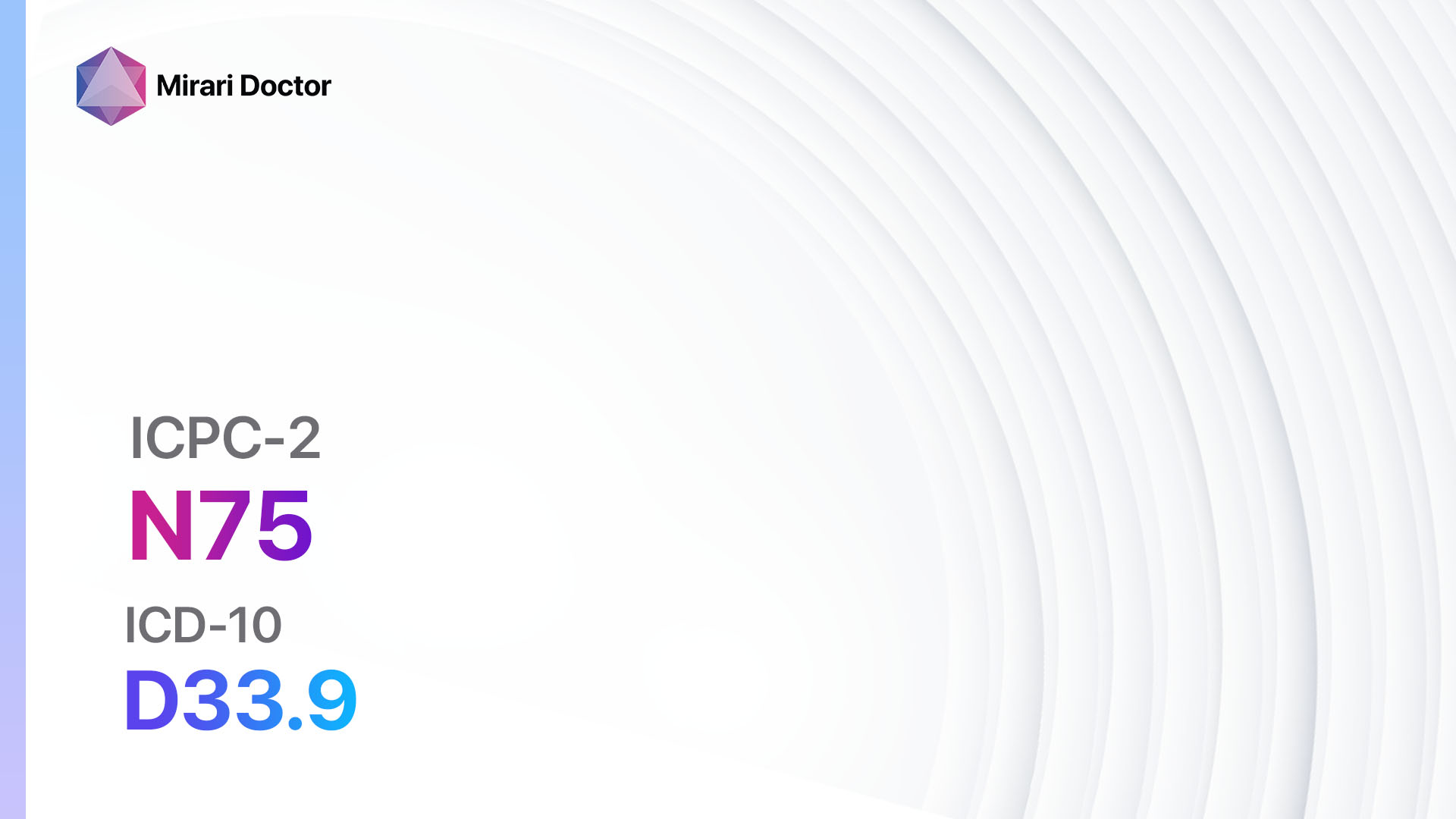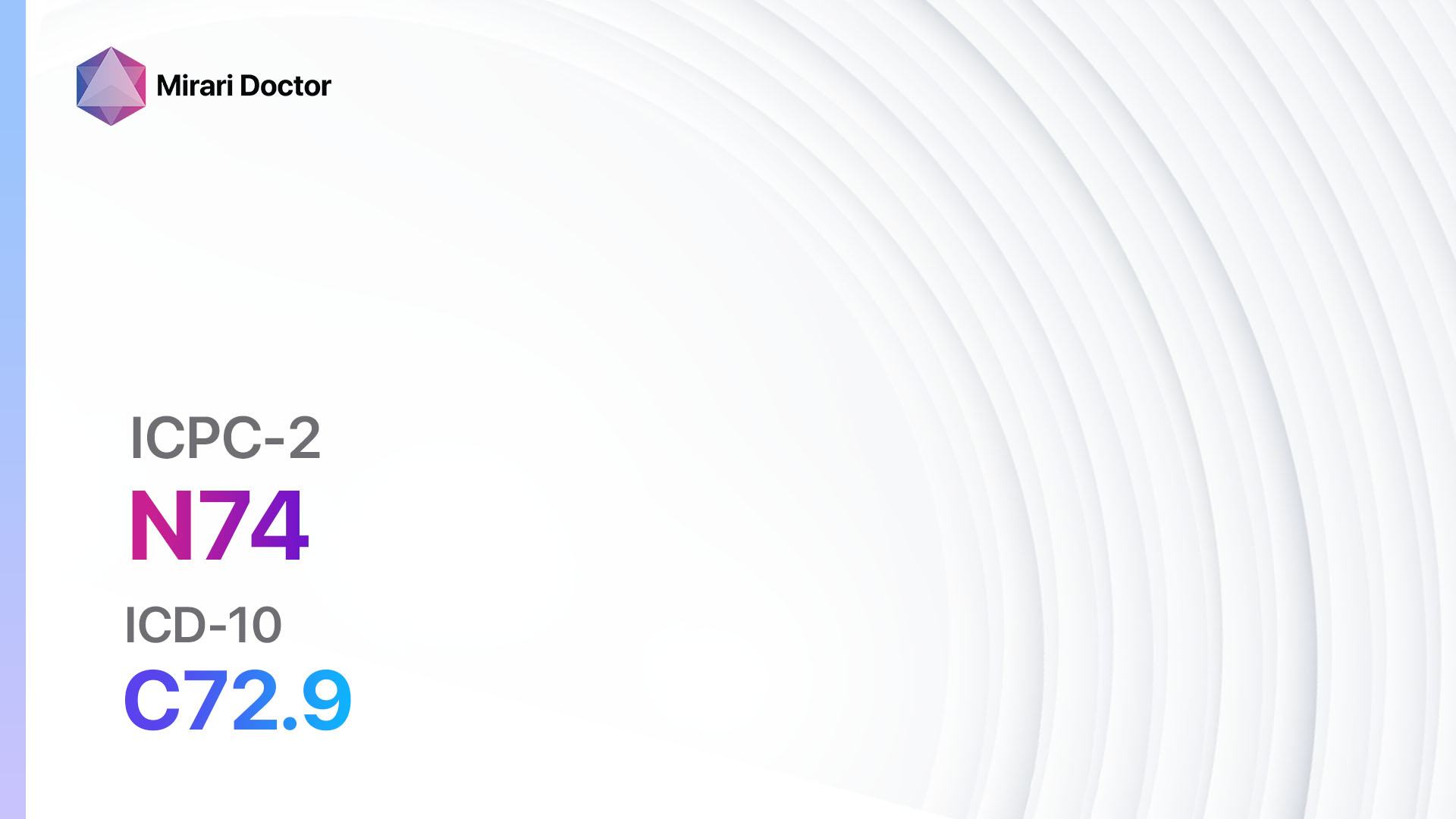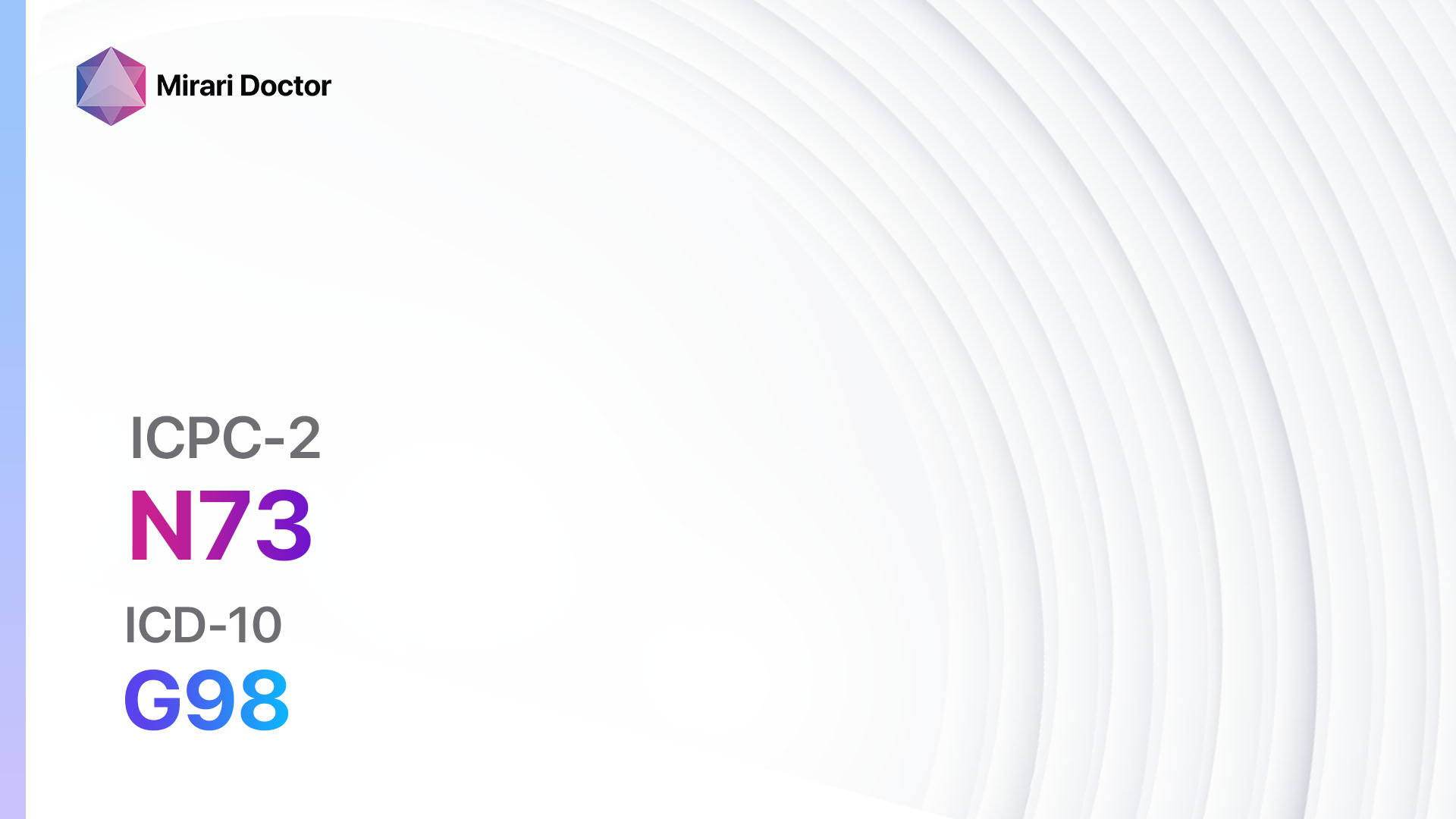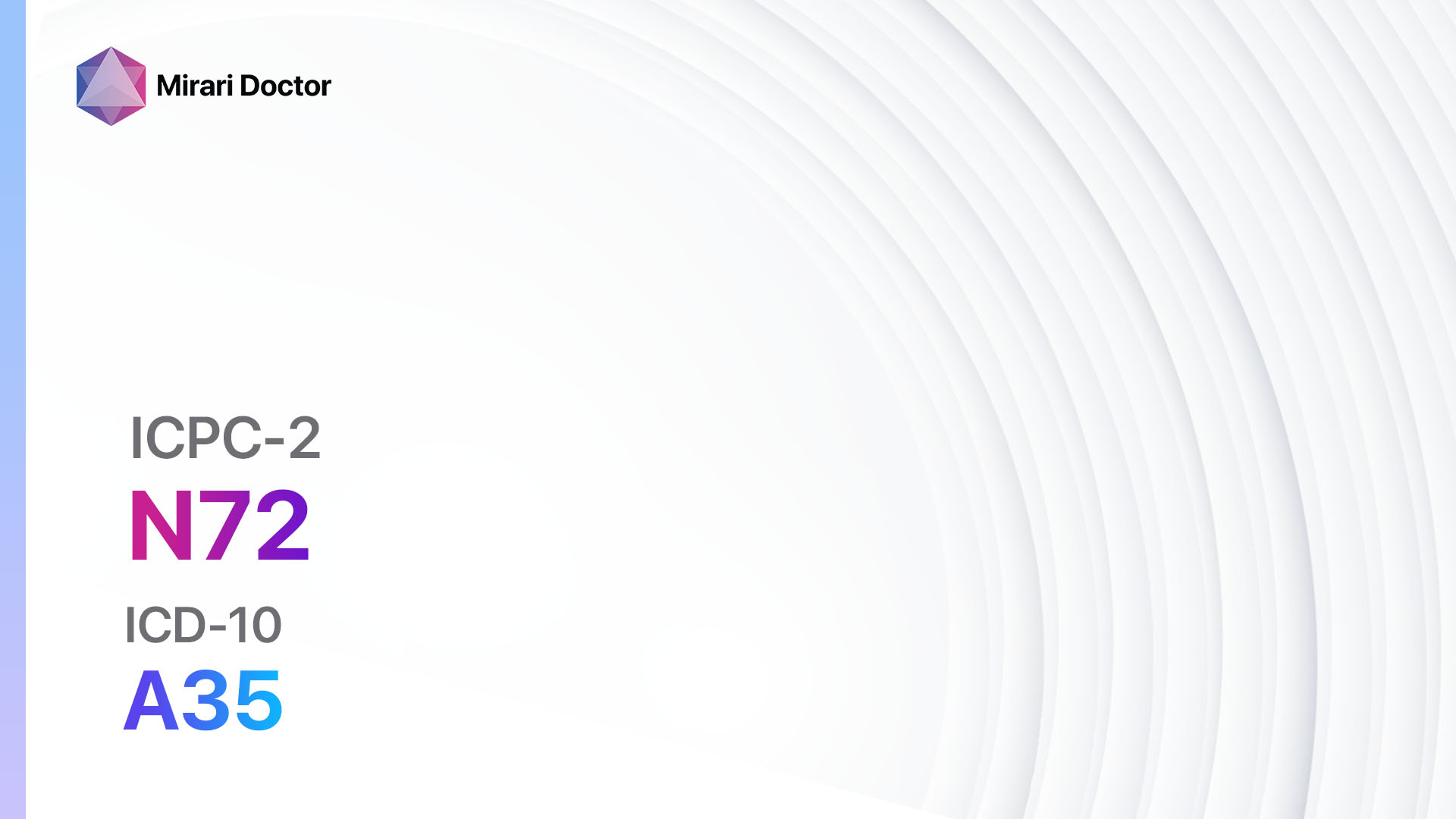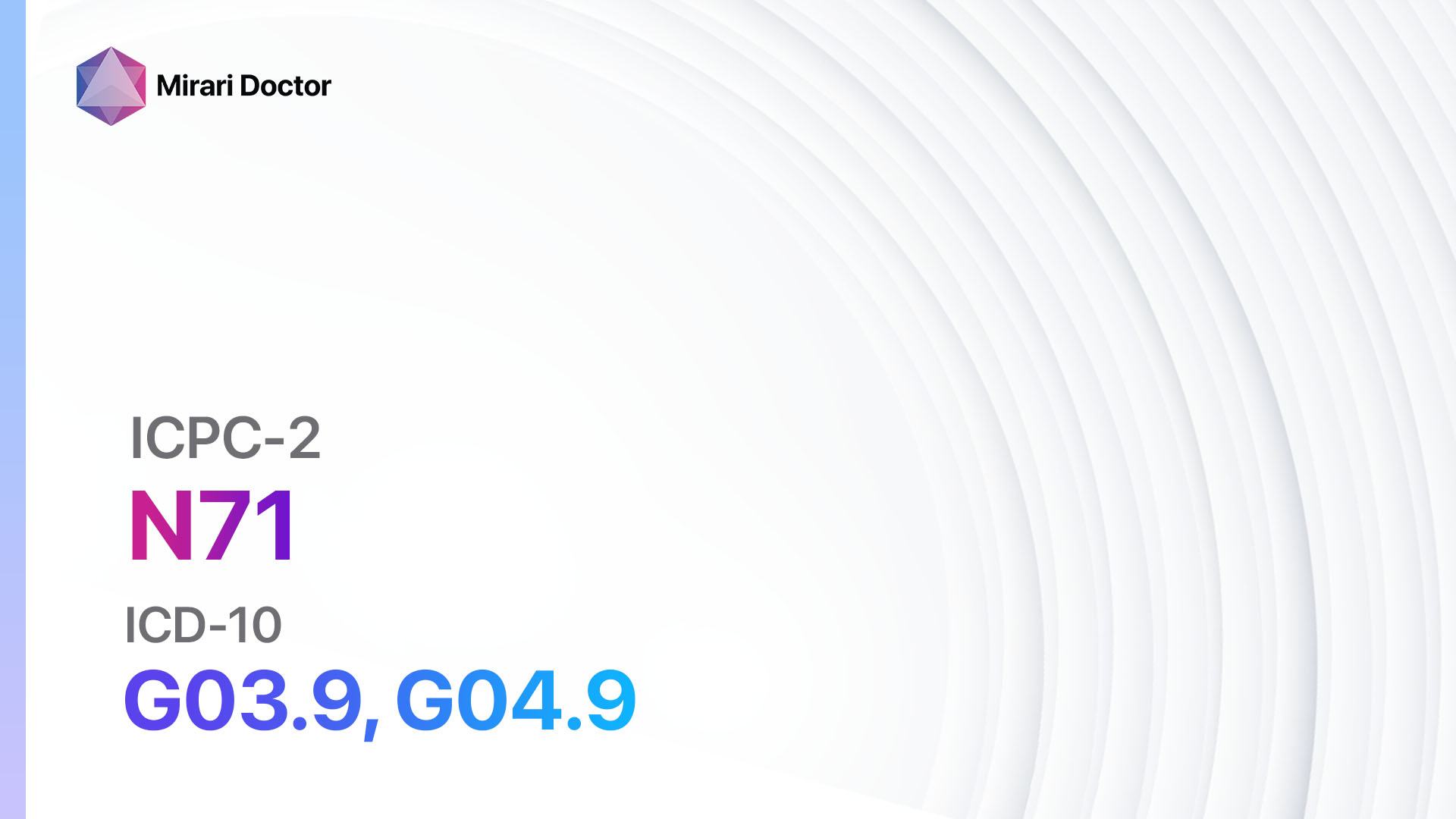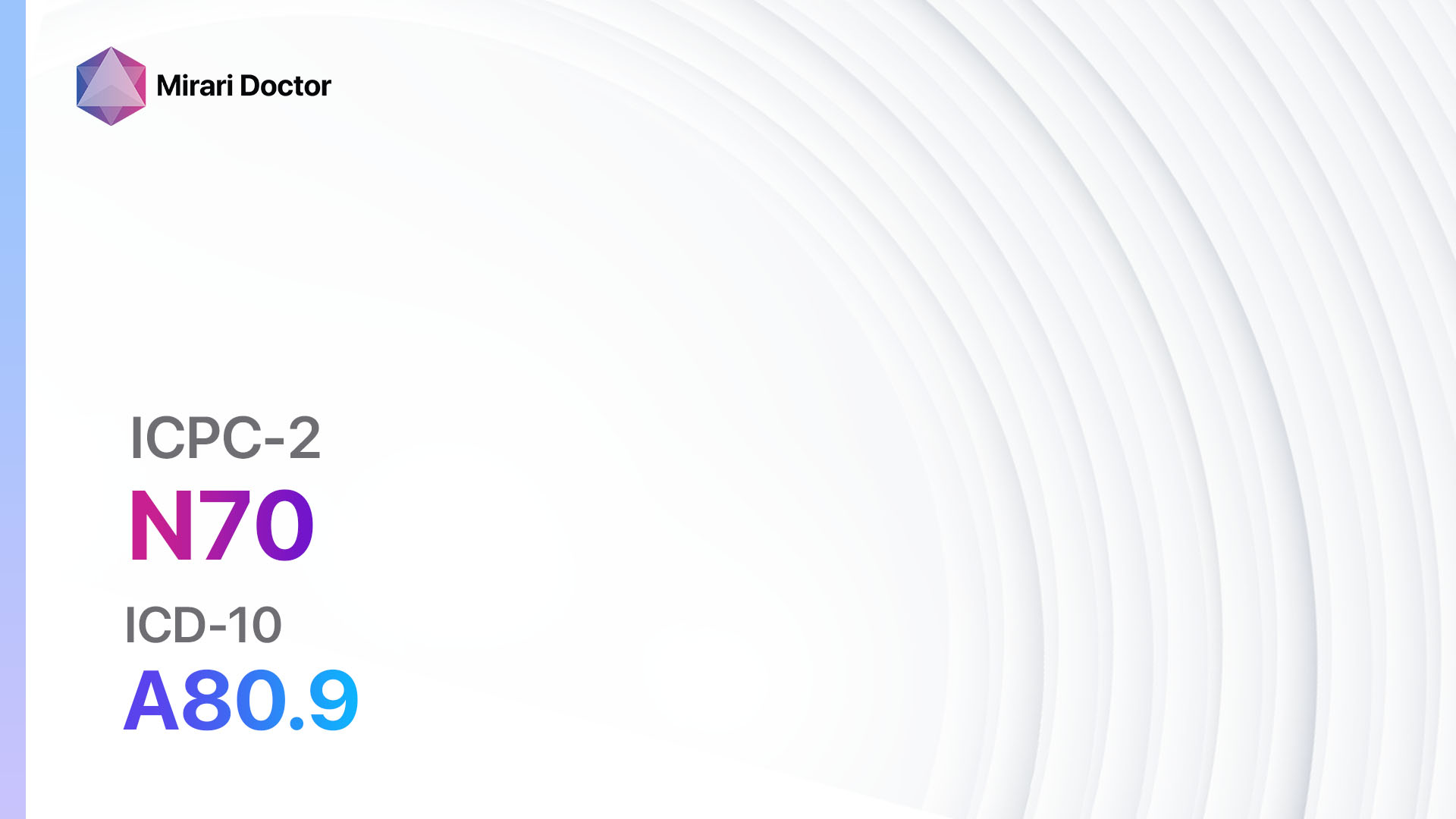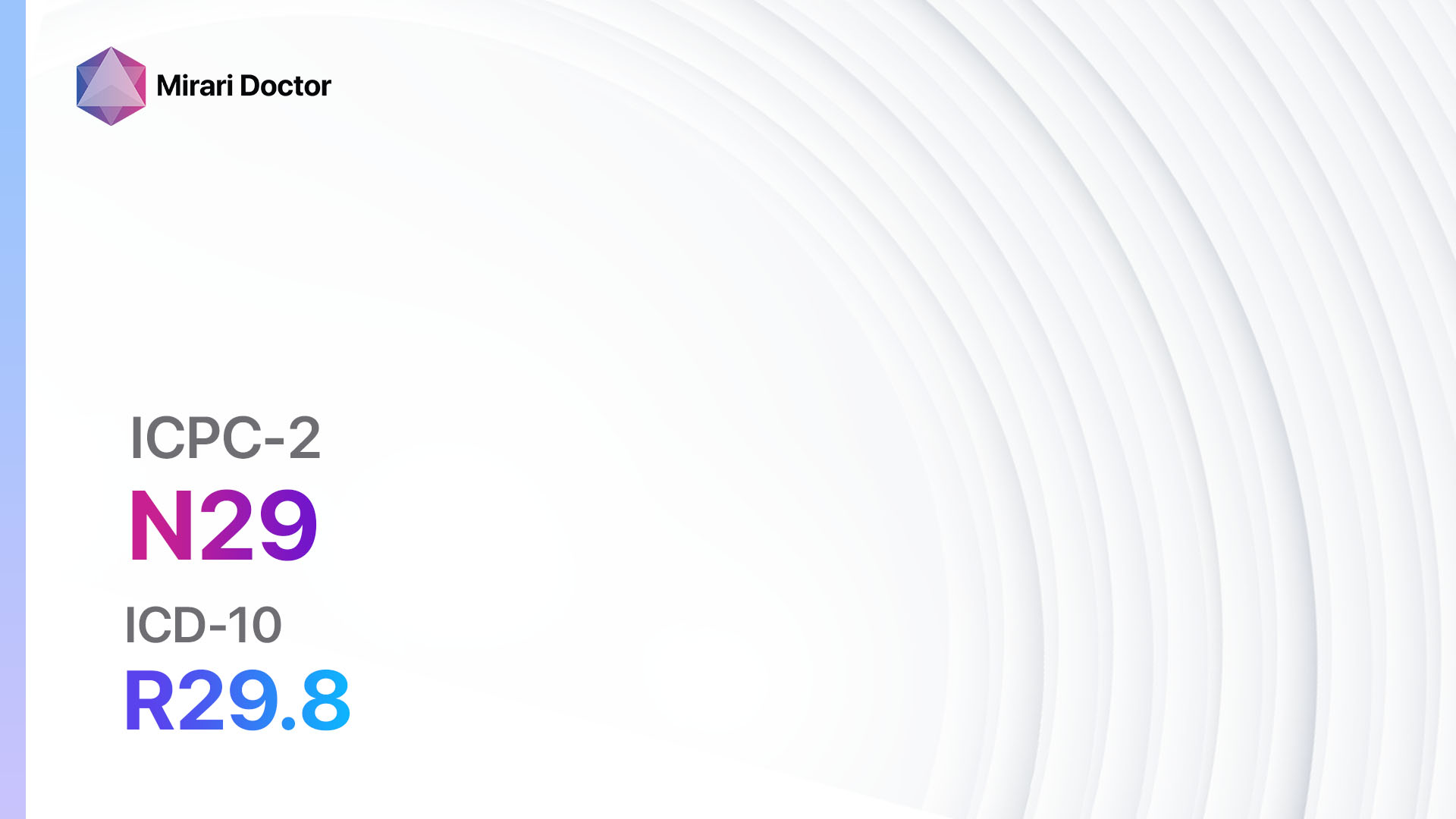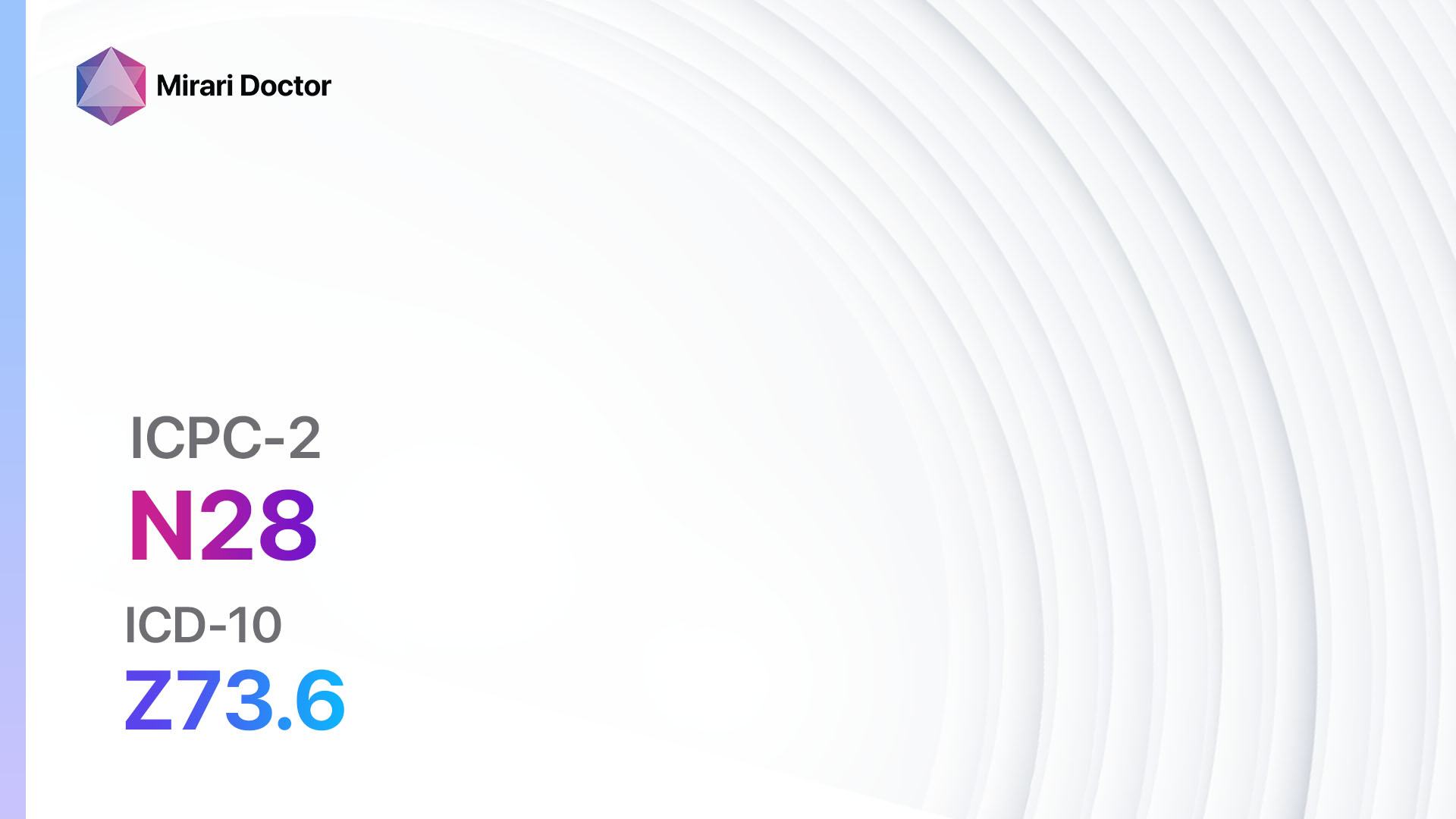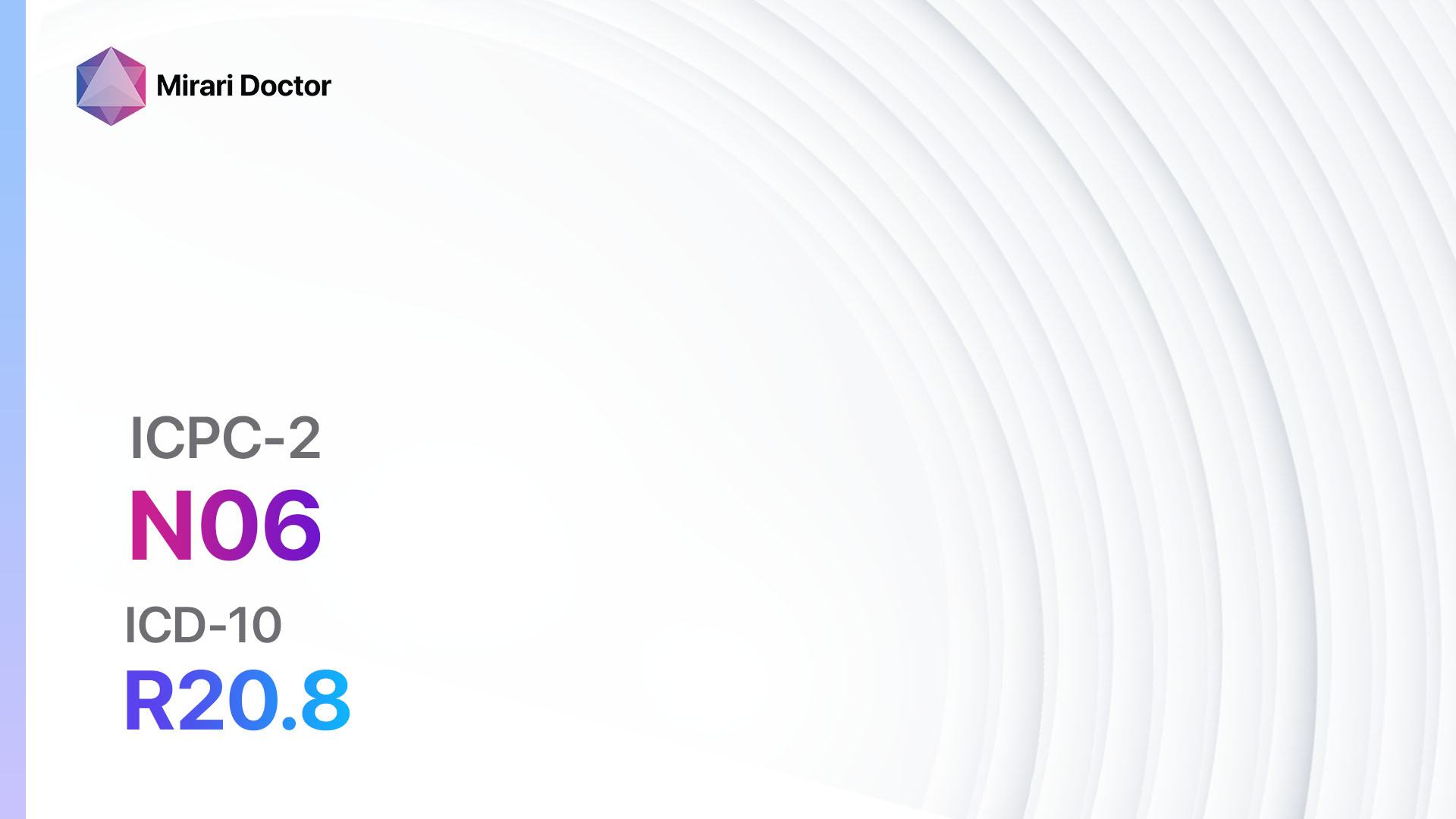
Introduction
Sensation disturbance other refers to a condition characterized by abnormal sensations or changes in sensory perception. It can manifest as numbness, tingling, burning, or other unusual sensations. This guide aims to provide a comprehensive overview of the condition, including its symptoms, causes, diagnostic steps, possible interventions, and lifestyle interventions.
Codes
- ICPC-2 Code: N06 Sensation disturbance other[1]
- ICD-10 Code: R20.8 Other and unspecified disturbances of skin sensation[2]
Symptoms
- Numbness: Loss of sensation in a specific area or throughout the body[3]
- Tingling: A prickling or “pins and needles” sensation[3]
- Burning: A sensation of heat or burning in the affected area[4]
- Altered sensitivity: Changes in the perception of touch, temperature, or pain[4]
Causes
- Nerve damage: Conditions such as peripheral neuropathy, nerve compression, or nerve injury can lead to sensation disturbances[5]
- Infections: Certain infections, such as shingles or Lyme disease, can cause sensory changes[6]
- Autoimmune disorders: Conditions like multiple sclerosis or lupus can affect the nerves and lead to sensation disturbances[7]
- Metabolic disorders: Diabetes or vitamin deficiencies can cause nerve damage and alter sensory perception[8]
- Medications: Certain medications, such as chemotherapy drugs or antiretrovirals, can cause sensation disturbances as a side effect[9]
Diagnostic Steps
Medical History
- Gather information about the patient’s symptoms, including the duration, frequency, and severity.
- Identify any risk factors, such as diabetes, autoimmune disorders, or previous nerve injuries.
- Inquire about any recent infections or exposure to toxins.
- Assess the impact of the symptoms on the patient’s daily life and activities[10]
Physical Examination
- Perform a thorough neurological examination to assess sensory function, including touch, temperature, and pain perception.
- Check for any signs of nerve damage, such as muscle weakness or loss of reflexes.
- Evaluate the patient’s overall physical health and look for any other potential underlying conditions[10]
Laboratory Tests
- Complete blood count (CBC): To check for any signs of infection or underlying metabolic disorders.
- Blood glucose levels: To assess for diabetes or impaired glucose tolerance.
- Vitamin B12 and folate levels: Deficiencies in these vitamins can cause nerve damage.
- Autoimmune markers: Tests such as antinuclear antibody (ANA) or rheumatoid factor (RF) may be ordered to evaluate for autoimmune disorders.
- Infectious disease testing: Depending on the patient’s history and symptoms, tests for specific infections may be necessary.
Diagnostic Imaging
- Nerve conduction studies: Measures the speed and strength of electrical signals in the nerves to assess for nerve damage or compression.
- Electromyography (EMG): Evaluates the electrical activity of muscles and can help identify nerve abnormalities.
- Magnetic resonance imaging (MRI): Provides detailed images of the brain, spinal cord, or other affected areas to detect any structural abnormalities or lesions.
- Computed tomography (CT) scan: May be used to visualize the spine or other bony structures for potential nerve compression.
Other Tests
- Skin biopsy: In certain cases, a small sample of skin may be taken to evaluate for nerve damage or small fiber neuropathy.
- Lumbar puncture: If there is suspicion of an underlying infection or autoimmune disorder affecting the nervous system, a sample of cerebrospinal fluid may be collected for analysis.
Follow-up and Patient Education
- Schedule regular follow-up appointments to monitor the progression of symptoms and assess the effectiveness of interventions.
- Provide education on self-care measures, such as maintaining good blood sugar control for diabetic patients or avoiding triggers for autoimmune conditions.
- Encourage patients to report any changes in symptoms or new concerns promptly.
Possible Interventions
Traditional Interventions
Medications:
Top 5 drugs for Sensation Disturbance Other:
- Gabapentin:
- Cost: $10-$50/month.
- Contraindications: Hypersensitivity to gabapentin.
- Side effects: Dizziness, drowsiness, and peripheral edema.
- Severe side effects: Suicidal thoughts, severe allergic reactions.
- Drug interactions: Antacids, opioids, and alcohol.
- Warning: May cause drowsiness or dizziness, avoid driving or operating machinery.
- Pregabalin:
- Cost: $10-$50/month.
- Contraindications: Hypersensitivity to pregabalin.
- Side effects: Dizziness, drowsiness, and weight gain.
- Severe side effects: Suicidal thoughts, severe allergic reactions.
- Drug interactions: Opioids, benzodiazepines, and alcohol.
- Warning: May cause drowsiness or dizziness, avoid driving or operating machinery.
- Tricyclic antidepressants (e.g., Amitriptyline, Nortriptyline):
- Cost: $10-$50/month.
- Contraindications: Recent heart attack, glaucoma, or urinary retention.
- Side effects: Dry mouth, constipation, and blurred vision.
- Severe side effects: Cardiac arrhythmias, seizures.
- Drug interactions: Monoamine oxidase inhibitors (MAOIs), anticoagulants.
- Warning: May cause drowsiness or dizziness, avoid driving or operating machinery.
- Selective serotonin reuptake inhibitors (SSRIs) (e.g., Fluoxetine, Sertraline):
- Cost: $10-$50/month.
- Contraindications: Hypersensitivity to SSRIs.
- Side effects: Nausea, headache, and sexual dysfunction.
- Severe side effects: Serotonin syndrome, suicidal thoughts.
- Drug interactions: MAOIs, NSAIDs, and anticoagulants.
- Warning: May cause drowsiness or dizziness, avoid driving or operating machinery.
- Opioids (e.g., Oxycodone, Hydrocodone):
- Cost: Varies depending on the specific medication and dosage.
- Contraindications: Hypersensitivity to opioids, respiratory depression.
- Side effects: Constipation, sedation, and nausea.
- Severe side effects: Respiratory depression, addiction.
- Drug interactions: Benzodiazepines, alcohol, and other central nervous system depressants.
- Warning: High risk of addiction and dependence, should be used cautiously and under close supervision.
Surgical Procedures:
- Nerve decompression surgery: In cases where nerve compression is identified, surgical intervention may be considered to relieve the pressure on the affected nerve. Cost: $5,000-$20,000.
- Spinal cord stimulation: Involves the implantation of a device that delivers electrical impulses to the spinal cord to alleviate pain and improve sensory perception. Cost: $20,000-$50,000.
Alternative Interventions
- Acupuncture: May help improve sensory perception and reduce pain. Cost: $60-$120 per session.
- Chiropractic care: Manipulative techniques may help alleviate nerve compression and improve sensory function. Cost: $50-$200 per session.
- Massage therapy: Can help relax muscles and improve blood flow, potentially reducing sensation disturbances. Cost: $50-$100 per session.
- Transcutaneous electrical nerve stimulation (TENS): Involves the use of low-voltage electrical currents to stimulate nerves and reduce pain. Cost: $50-$100 for a TENS unit.
- Herbal supplements: Some herbs, such as St. John’s wort or evening primrose oil, may have potential benefits for nerve health. Cost: Varies depending on the specific supplement.
Lifestyle Interventions
- Regular exercise: Engaging in physical activity can improve blood flow and nerve function. Cost: Varies depending on the chosen activity (e.g., gym membership, equipment).
- Healthy diet: Consuming a balanced diet rich in vitamins and minerals can support nerve health. Cost: Varies depending on food choices.
- Stress management techniques: Practices such as meditation, yoga, or deep breathing exercises can help reduce stress and improve overall well-being. Cost: Varies depending on the chosen method (e.g., classes, apps).
- Smoking cessation: Quitting smoking can improve blood flow and reduce the risk of further nerve damage. Cost: Varies depending on the chosen method (e.g., nicotine replacement therapy, counseling).
- Adequate sleep: Getting enough restful sleep can support overall nerve health. Cost: Varies depending on individual sleep needs and any necessary interventions (e.g., sleep aids).
It is important to note that the cost ranges provided are approximate and may vary depending on the location and availability of the interventions.
Mirari Cold Plasma Alternative Intervention
Understanding Mirari Cold Plasma
- Safe and Non-Invasive Treatment:Mirari Cold Plasma is a safe and non-invasive treatment option for various skin conditions. It does not require incisions, minimizing the risk of scarring, bleeding, or tissue damage.
- Efficient Extraction of Foreign Bodies:Mirari Cold Plasma facilitates the removal of foreign bodies from the skin by degrading and dissociating organic matter, allowing easier access and extraction.
- Pain Reduction and Comfort:Mirari Cold Plasma has a local analgesic effect, providing pain relief during the treatment, making it more comfortable for the patient.
- Reduced Risk of Infection:Mirari Cold Plasma has antimicrobial properties, effectively killing bacteria and reducing the risk of infection.
- Accelerated Healing and Minimal Scarring: Mirari Cold Plasma stimulates wound healing and tissue regeneration, reducing healing time and minimizing the formation of scars.
Mirari Cold Plasma Prescription
Video instructions for using Mirari Cold Plasma Device – N06 Sensation disturbance other (ICD-10:R20.8)
| Mild | Moderate | Severe |
| Mode setting: 2 (Wound Healing) Location: 0 (Localized) Morning: 15 minutes, Evening: 15 minutes | Mode setting: 2 (Wound Healing) Location: 0 (Localized) Morning: 30 minutes, Lunch: 30 minutes, Evening: 30 minutes | Mode setting: 2 (Wound Healing) Location: 0 (Localized) Morning: 30 minutes, Lunch: 30 minutes, Evening: 30 minutes |
| Mode setting: 7 (Immunotherapy) Location: 1 (Sacrum) Morning: 15 minutes, Evening: 15 minutes | Mode setting: 7 (Immunotherapy) Location: 1 (Sacrum) Morning: 30 minutes, Lunch: 30 minutes, Evening: 30 minutes | Mode setting: 7 (Immunotherapy) Location: 1 (Sacrum) Morning: 30 minutes, Lunch: 30 minutes, Evening: 30 minutes |
| Total Morning:30minutesapprox.$5USD, Evening:30minutesapprox.$5USD | Total Morning:60minutesapprox.$10USD, Lunch:60minutesapprox. $10 USD, Evening:60minutesapprox. $10 USD, | Total Morning:60minutesapprox.$10USD, Lunch:60minutesapprox. $10 USD, Evening:60minutesapprox. $10 USD, |
| Usualtreatmentfor7-60daysapprox.$70USD–$600USD | Usualtreatmentfor6-8weeksapprox.$1,260USD–$1,680USD | Usualtreatmentfor3-6monthsapprox.$2,700USD–$5,400USD |
 |
|
Use the Mirari Cold Plasma device to treat Sensation disturbance other effectively.
WARNING: MIRARI COLD PLASMA IS DESIGNED FOR THE HUMAN BODY WITHOUT ANY ARTIFICIAL OR THIRD PARTY PRODUCTS. USE OF OTHER PRODUCTS IN COMBINATION WITH MIRARI COLD PLASMA MAY CAUSE UNPREDICTABLE EFFECTS, HARM OR INJURY. PLEASE CONSULT A MEDICAL PROFESSIONAL BEFORE COMBINING ANY OTHER PRODUCTS WITH USE OF MIRARI.
Step 1: Cleanse the Skin
- Start by cleaning the affected area of the skin with a gentle cleanser or mild soap and water. Gently pat the area dry with a clean towel.
Step 2: Prepare the Mirari Cold Plasma device
- Ensure that the Mirari Cold Plasma device is fully charged or has fresh batteries as per the manufacturer’s instructions. Make sure the device is clean and in good working condition.
- Switch on the Mirari device using the power button or by following the specific instructions provided with the device.
- Some Mirari devices may have adjustable settings for intensity or treatment duration. Follow the manufacturer’s instructions to select the appropriate settings based on your needs and the recommended guidelines.
Step 3: Apply the Device
- Place the Mirari device in direct contact with the affected area of the skin. Gently glide or hold the device over the skin surface, ensuring even coverage of the area experiencing.
- Slowly move the Mirari device in a circular motion or follow a specific pattern as indicated in the user manual. This helps ensure thorough treatment coverage.
Step 4: Monitor and Assess:
- Keep track of your progress and evaluate the effectiveness of the Mirari device in managing your Sensation disturbance other. If you have any concerns or notice any adverse reactions, consult with your health care professional.
Note
This guide is for informational purposes only and should not replace the advice of a medical professional. Always consult with your healthcare provider or a qualified medical professional for personal advice, diagnosis, or treatment. Do not solely rely on the information presented here for decisions about your health. Use of this information is at your own risk. The authors of this guide, nor any associated entities or platforms, are not responsible for any potential adverse effects or outcomes based on the content.
Mirari Cold Plasma System Disclaimer
- Purpose: The Mirari Cold Plasma System is a Class 2 medical device designed for use by trained healthcare professionals. It is registered for use in Thailand and Vietnam. It is not intended for use outside of these locations.
- Informational Use: The content and information provided with the device are for educational and informational purposes only. They are not a substitute for professional medical advice or care.
- Variable Outcomes: While the device is approved for specific uses, individual outcomes can differ. We do not assert or guarantee specific medical outcomes.
- Consultation: Prior to utilizing the device or making decisions based on its content, it is essential to consult with a Certified Mirari Tele-Therapist and your medical healthcare provider regarding specific protocols.
- Liability: By using this device, users are acknowledging and accepting all potential risks. Neither the manufacturer nor the distributor will be held accountable for any adverse reactions, injuries, or damages stemming from its use.
- Geographical Availability: This device has received approval for designated purposes by the Thai and Vietnam FDA. As of now, outside of Thailand and Vietnam, the Mirari Cold Plasma System is not available for purchase or use.
References
- World Health Organization. (2021). International Classification of Primary Care, Second edition (ICPC-2). Retrieved from//www.who.int/standards/classifications/other-classifications/international-classification-of-primary-care
- World Health Organization. (2019). International Statistical Classification of Diseases and Related Health Problems (ICD-10). Retrieved from//icd.who.int/browse10/2019/en
- National Institute of Neurological Disorders and Stroke. (2021). Peripheral Neuropathy Fact Sheet. Retrieved from//www.ninds.nih.gov/Disorders/Patient-Caregiver-Education/Fact-Sheets/Peripheral-Neuropathy-Fact-Sheet
- Gilron, I., Baron, R., & Jensen, T. (2015). Neuropathic pain: principles of diagnosis and treatment. Mayo Clinic Proceedings, 90(4), 532-545.
- Watson, J. C., & Dyck, P. J. (2015). Peripheral neuropathy: a practical approach to diagnosis and symptom management. Mayo Clinic Proceedings, 90(7), 940-951.
- Centers for Disease Control and Prevention. (2021). Lyme Disease. Retrieved from//www.cdc.gov/lyme/index.html
- National Multiple Sclerosis Society. (2021). MS Symptoms. Retrieved from//www.nationalmssociety.org/Symptoms-Diagnosis/MS-Symptoms
- American Diabetes Association. (2021). Neuropathy. Retrieved from//www.diabetes.org/diabetes/complications/neuropathy
- Argyriou, A. A., Bruna, J., Marmiroli, P., & Cavaletti, G. (2012). Chemotherapy-induced peripheral neurotoxicity (CIPN): an update. Critical Reviews in Oncology/Hematology, 82(1), 51-77.
- Halperin, J. J. (2015). Chronic Lyme disease: misconceptions and challenges for patient management. Infection and Drug Resistance, 8, 119-128.
Related articles
Made in USA


